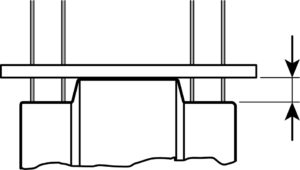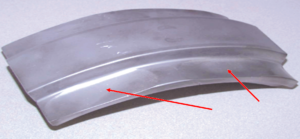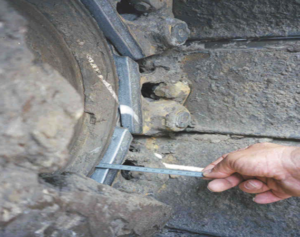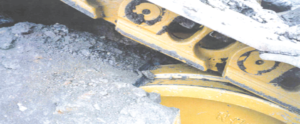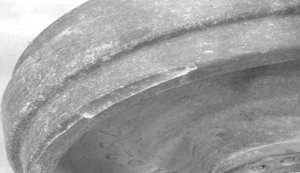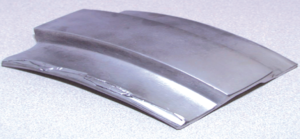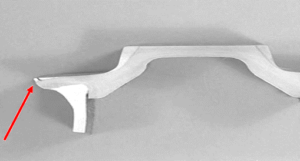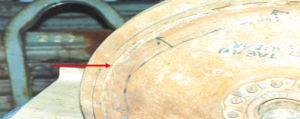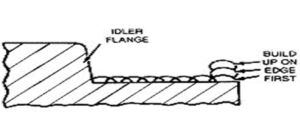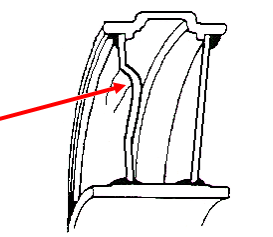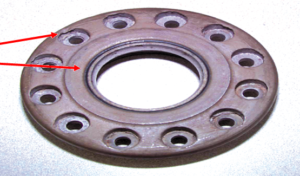The idler is measured with a depth gauge using four points that are then averaged for the final measurement. The exact process is shown in the video below.
Potential Observations
What to look for
Below are some of the issues you should be looking for when inspecting an idler. This list does not cover all possible issues, but is a starting point that covers most genral issues.
Flattened Tread Wear
Link Overhang Wear
Center Flange Side Wear
Center Flange Top Wear
Uneven Tread Wear (Inner/Outer)
Tread Spalling
Radial Tread Cracking
Idler Side Wall Weld Cracking
Idler tread Cracking after rebuild
Fabricated Idler Side Plate Damage
Idler Tread Wear Difference Front to Rear
Idler retainer Wear

